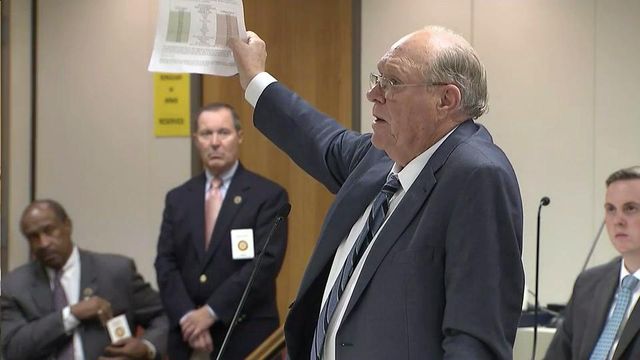Senators want high schools to offer two math curricula
High schools would have to allow students to choose whether to take traditional math courses or new integrated math courses under a bill that cleared the Senate Education Committee on Wednesday.
Posted — UpdatedDuring last week's meeting, Sen. Jerry Tillman, R-Randolph, a former high school principal, blasted the new course of study as nonsensical. On Wednesday, he took a more conciliatory tone.
"This bill says we recognize that Math 1, 2 and 3 has some great advantages," Tillman said.
That's especially so for what he called "high-flying" students. But students less adept at math, he said, would benefit from a more traditional model.
Schools would have a year to make plans for the dual course of math study.
Tillman's original bill sparked objections from school districts and the Department of Public Instruction, which said it would make for a chaotic transition back to the old model of study. They said that the new course of study effectively blends concepts such as statistics and engineering math with more traditional math concepts in a way that new standardized tests, colleges and employers demand.
Both opponents and proponents of Tillman's original bill packed the committee room Wednesday, but few outside the committee were given a chance to review the new math bill in advance of the meeting, and the changes did not mollify opponents.
Teachers who spoke to the committee said that requiring high schools to offer two courses of study would be equally problematic. Allowing students to choose their path could create imbalanced classes if more students choose one path than the other, and already hard-to-find math teachers could be discouraged by being forced to teach on two distinct tracks, they said.
"For me, it's about the kids," said Wendy Bartlett, a math teacher at Parkland High School in Winston-Salem.
The integrated curriculum, she said, "is the best way to teach kids to be mathematical thinkers for 21st-century jobs."
Students, Bartlett said, need to learn how to tie math concepts together in order to solve real-world problems.
The blended math standards are closely associated with the state's adoption of Common Core, a national set of teaching standards that have sparked anger and suspicion, particularly among political conservatives. Tillman's compromise measure disappointed some on the committee.
"I'm a little disappointed," Sen. Bill Cook, R-Beaufort, said. "We've been trying to get rid of Common Core for four years, and we're still not there."
Sen. Chad Barefoot, R-Wake, the committee chairman, said that lawmakers are trying to move "in a more thoughtful way" rather than require a lot of change quickly as happened with Common Core.
"We flipped the light switch in North Carolina and turned math into a dark place," Barefoot said. "Now, we're trying to bring some light back to it."
Related Topics
• Credits
Copyright 2024 by Capitol Broadcasting Company. All rights reserved. This material may not be published, broadcast, rewritten or redistributed.






